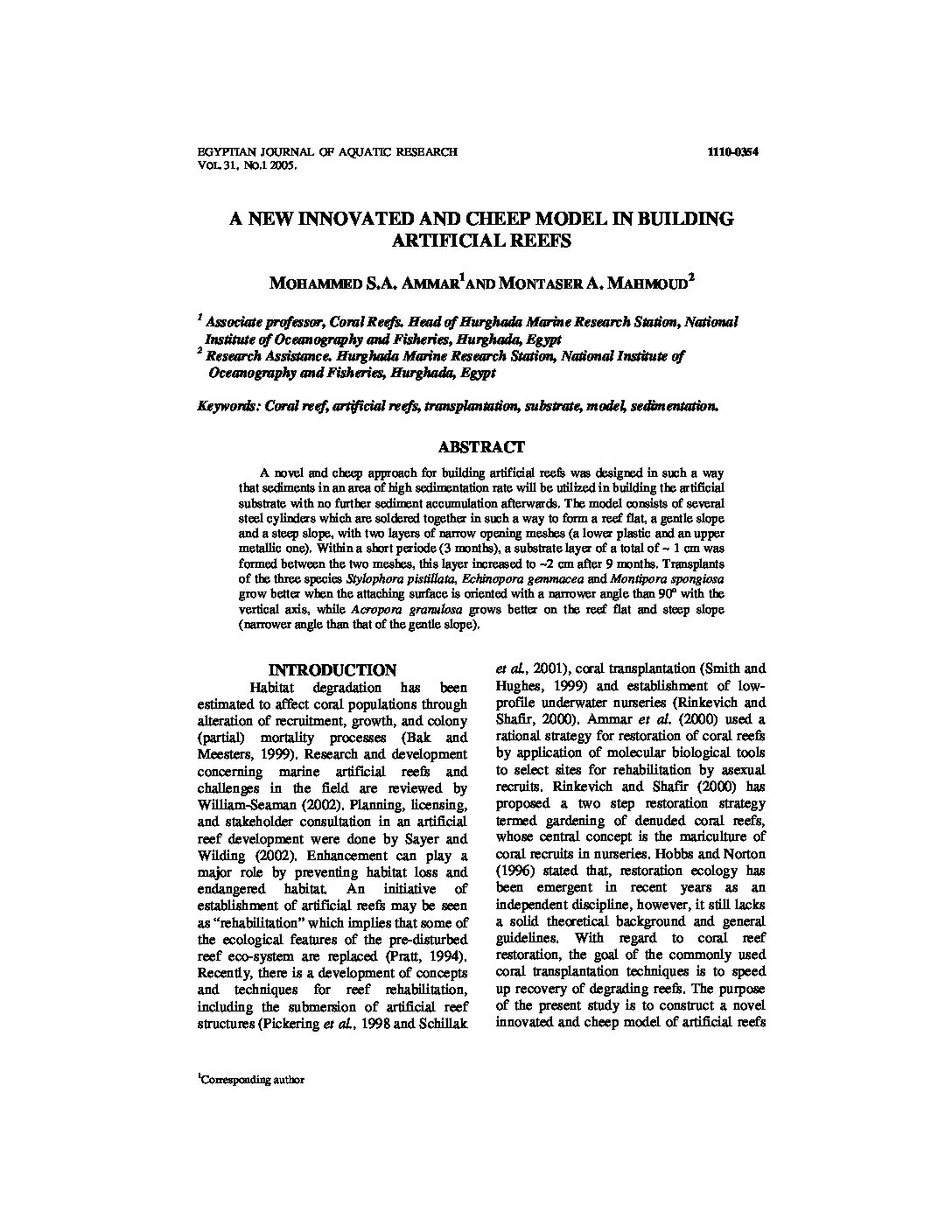Categories
vol-31STAPHYLOCOCCUS AUREUS AND FECAL INDICATORS IN
EGYPTIAN COASTAL WATERS OF AQABA GULF,
SUEZ GULF AND RED SEA
MOHAMED A. EL-SHENAWY
Department of Microbiology, National Institute of Oceanography & Fisheries, Kayet Bay,
Alexandria, Egypt.
Keywords: Staphylococcus aureus; fecal indicators; recreational water; Red Sea; water quality.
ABSTRACT
The occurrence of Staphylococcus aureus (S. aureus) and conventional fecal indicators
bacteria namely total coliform (TC), E. Coli (EC) and fecal streptococci (FS) were
investigated, in total of 200 coastal water samples, at 40 sites during January, March, May,
July and September 2003. Based on national and international bacterial standards, 107
samples (53.5%), 18 samples (9.0%), 39 samples (19.5%) and 43 samples (21.5%) were
found to exceed the guide values for S. aureus, TC, EC and FS respectively. Assosiation
between S. aureus counts and levels of recreational water activities was observed. No
significant correlation has been found between S. aureus counts and the measured
hydrographical parameters as well as the other examined fecal indicators. At the same time,
TC, EC and FS were significantly correlated with each others. The number of samples that
harbour S. aureus, exceeded the guide values, without the other fecal indicators were found
in 35.3% of the examined samples compared with 14.5% of samples that harbour S. aureus
with EC and / or S. aureus with FS. These results may suggest that monitoring S.aureus as
supplementary indicator, especially in heavy recreational beaches, is recommended for
judging the sanitary quality of coastal waters in these areas.







